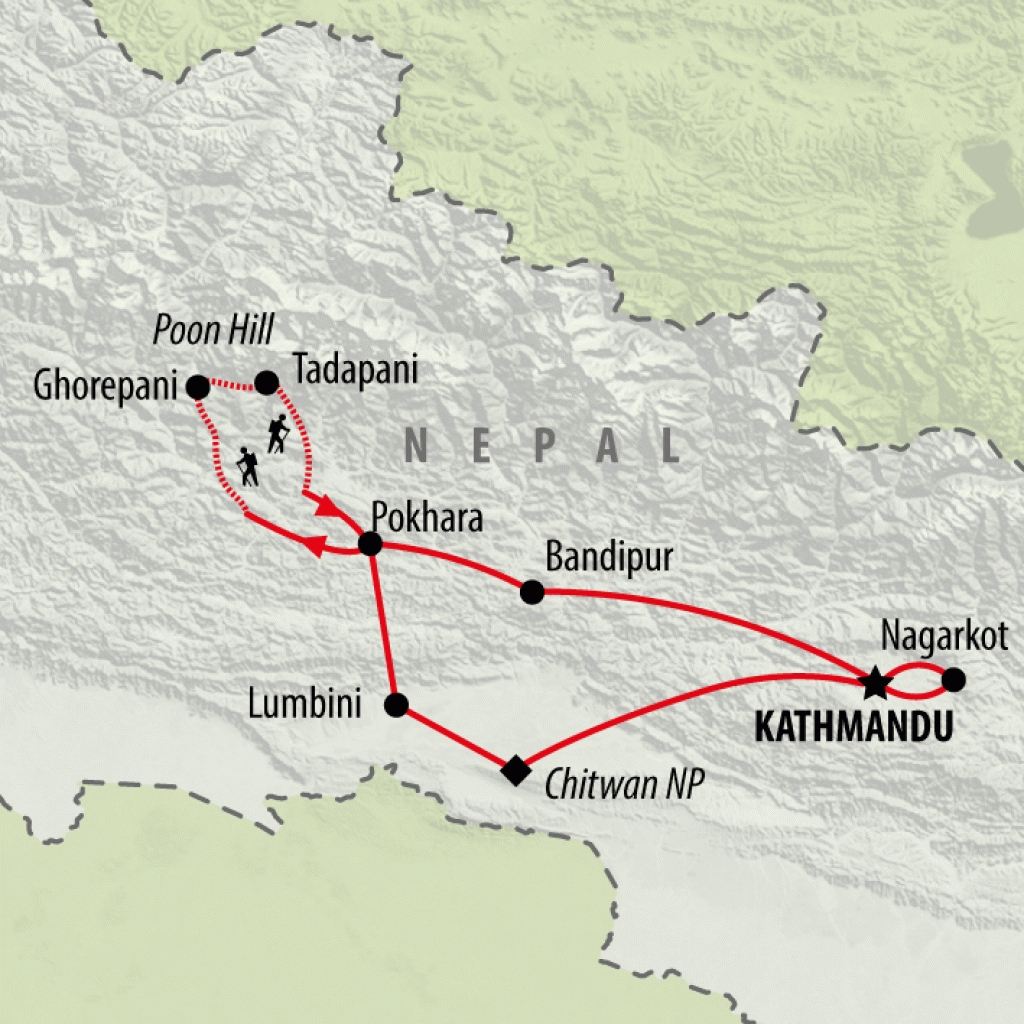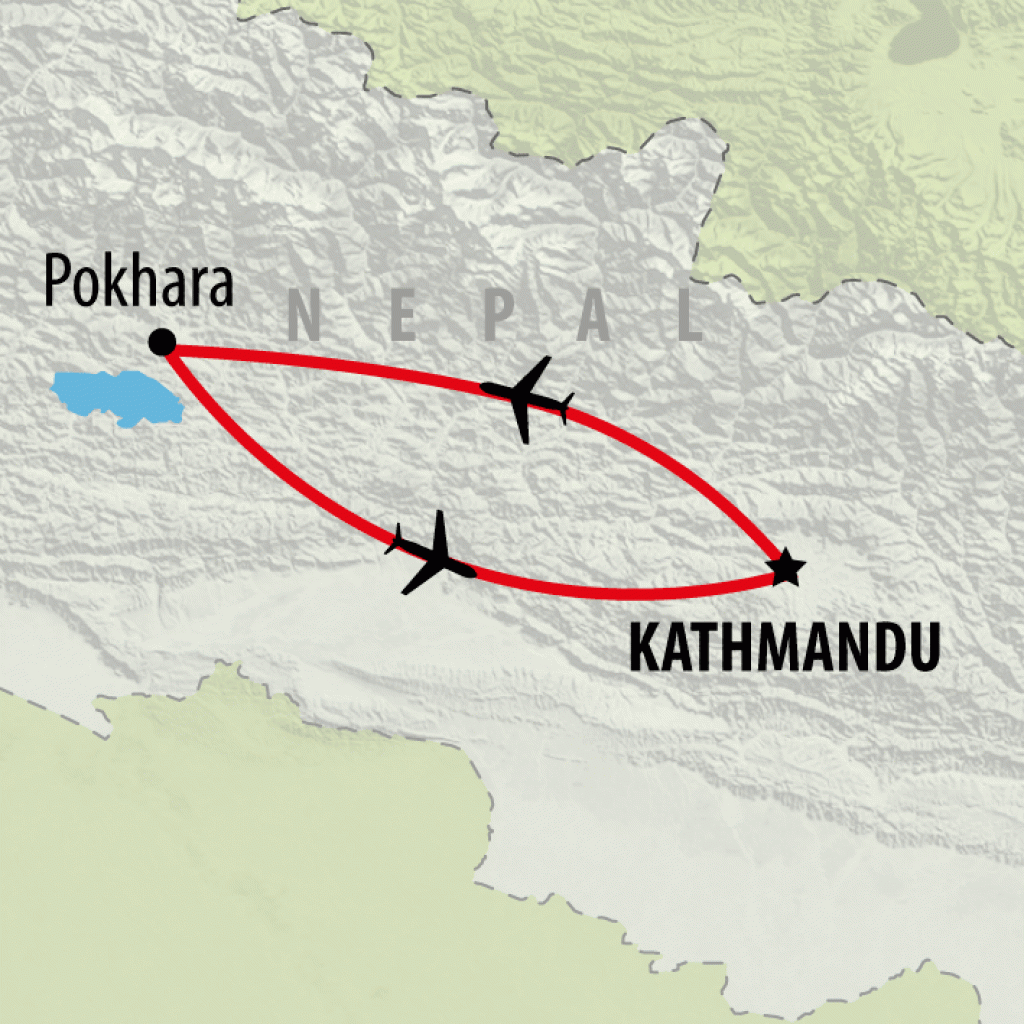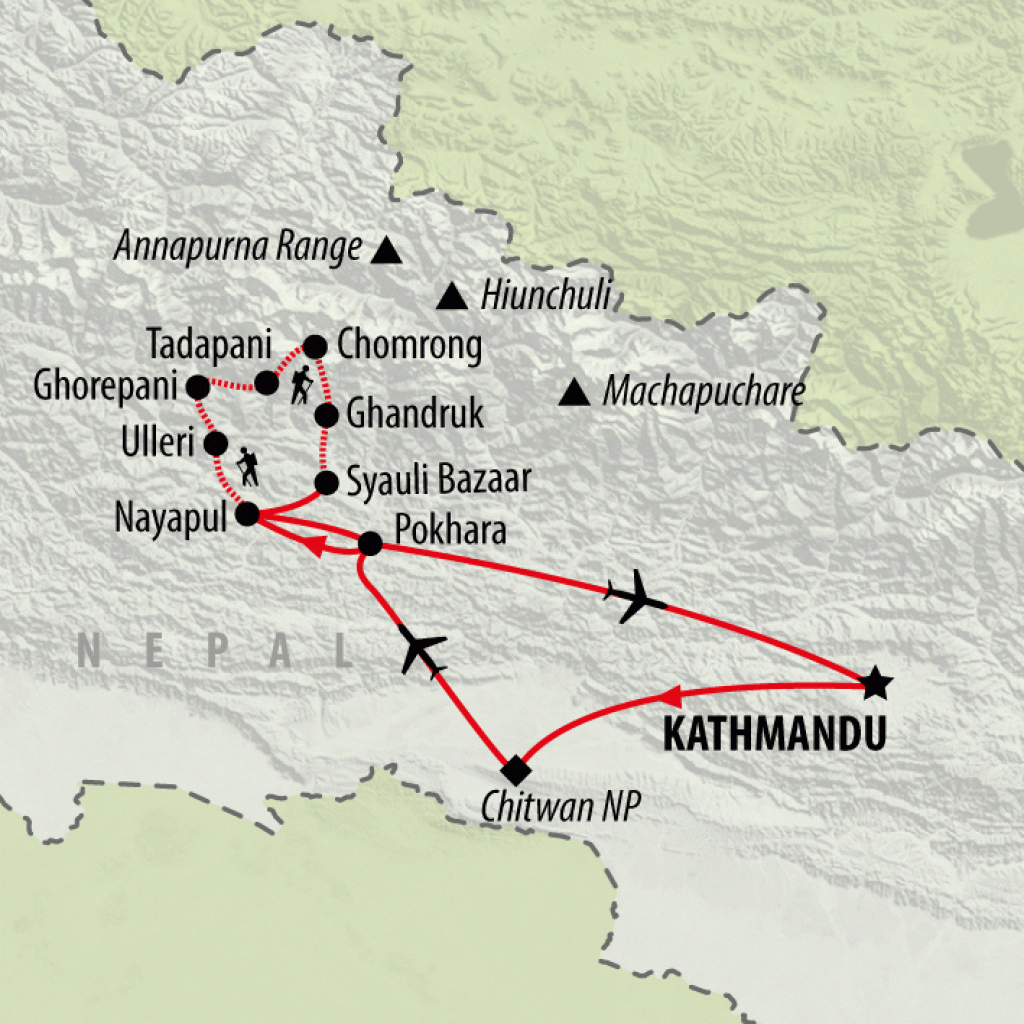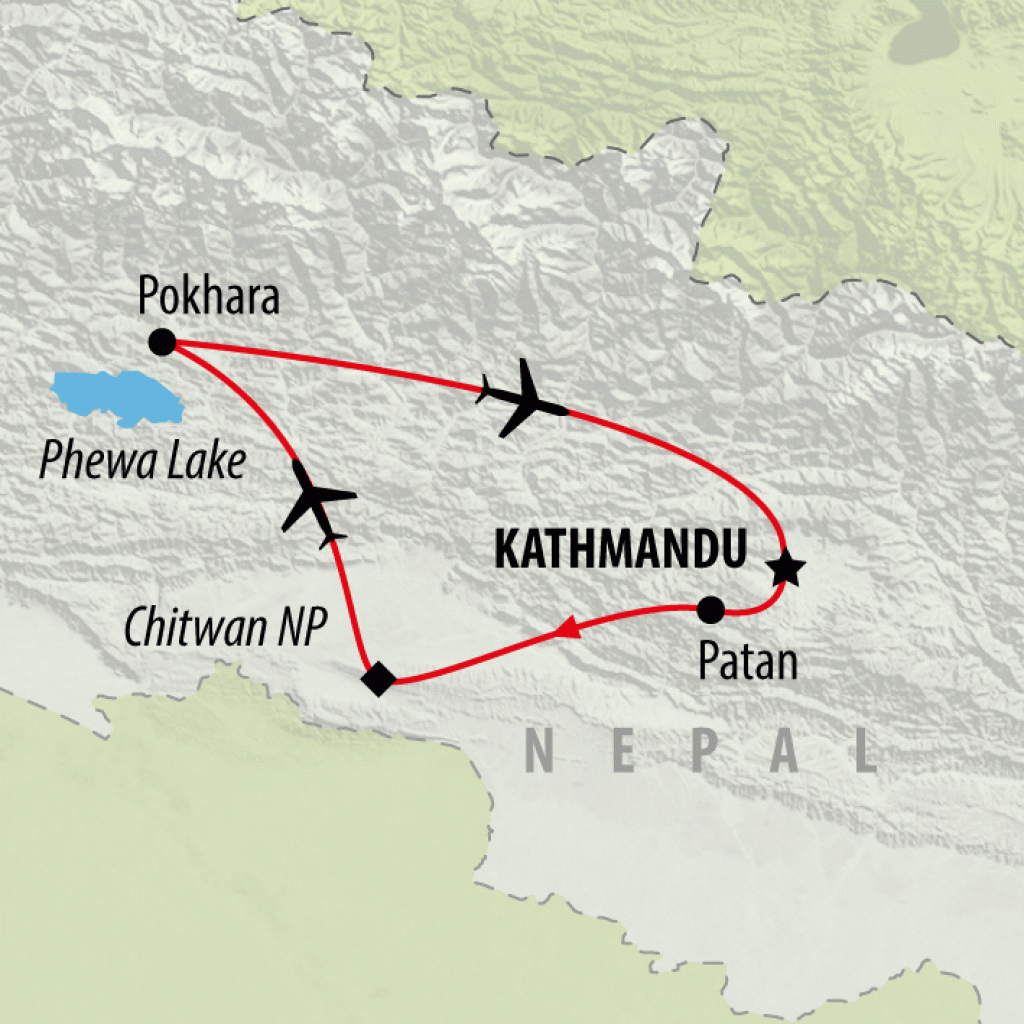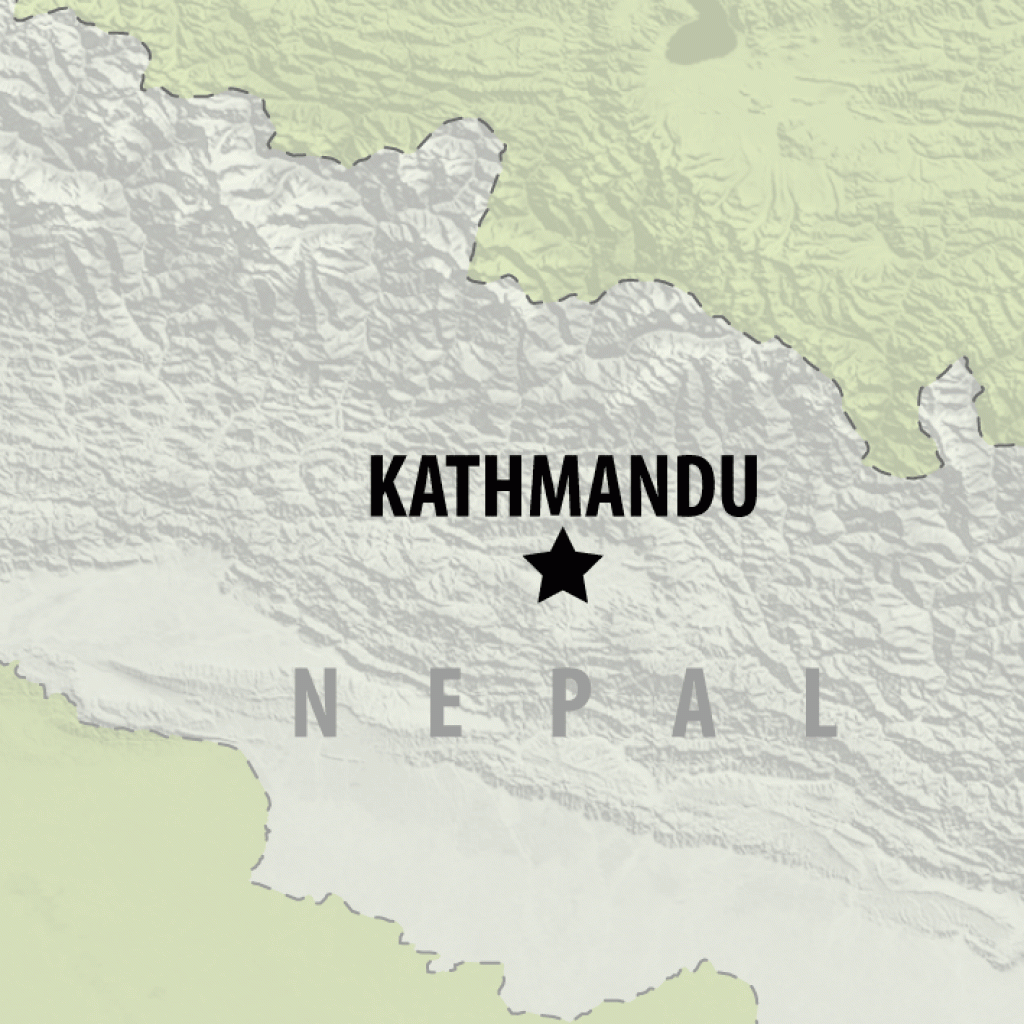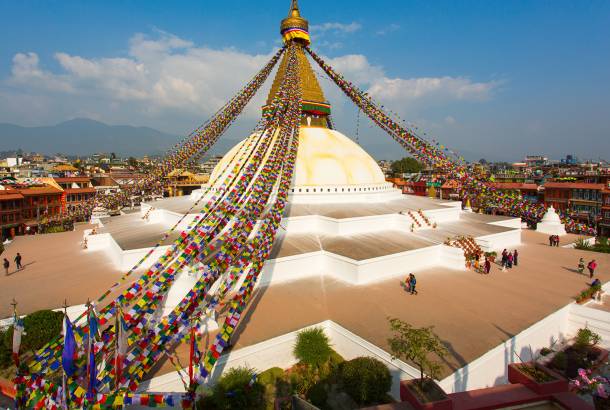
If you're planning a trip to the Himalayan kingdom of Nepal, no doubt you'll have a few questions about what to expect, whether it's what health precautions to take or what food you can hope to enjoy once you're over there. We're here to help with these travel tips.
What vaccinations do I need for Nepal?
You should seek medical advice from your local health practitioner before travelling to Nepal and ensure that you receive all of the appropriate vaccinations. As a guide Diphtheria, Tetanus, Typhoid, Hepatitis A and Polio are strongly recommended.
Dengue Fever
Nepal has recently confirmed cases of Dengue Fever which is transmitted through infected aedes mosquitos. There is no vaccination for travellers but you should take measures to prevent mosquito bites during the daytime by using a repellent containing 20%-30% DEET. Apply sunscreen first and then repellant at least 15 minutes later. Neutral-coloured clothing is also recommended, as are long-sleeved, breathable garments.
Do I need anti-malaria tablets for Nepal?
There is a low risk of malaria in Nepal in areas below 1500m, particularly in the Terai district but no risk in Kathmandu or the trekking regions. It is recommended that you consult with your local health practitioner if you plan on visiting this area to see whether or not you should take anti-malarial tablets or not.For the latest health advice for Nepal please visit the NHS Fit to Travel page or the CDC Traveler's Health page.
Is it safe to drink tap water in Nepal?
As tap water is not safe to drink in Nepal, only drink bottled mineral water which is readily available in hotels, shops and restaurants. You should also avoid salads which may be washed in unhygienic water.
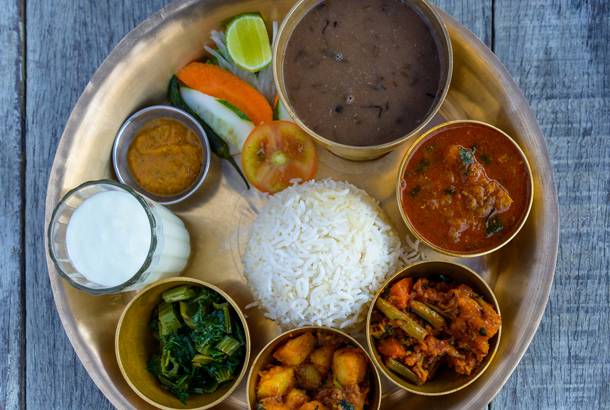
What's the food like in Nepal?
The national dish of Nepal is Daal Bhaat Takaari (lentils, rice and vegetable curry) which can be found in a range of flavours and is often served as a main course for lunch and dinner. For many people in Nepal this is the only dish they eat. It often varies in quality, being excellent in one restaurant and bland in another. This also forms the basis of a thali, a round platter of various dishes that also include roti, papad, curd, chutney and pickles. Thalis are a varied and cost effective meal while in Nepal.
Nepali food has Tibetan influences, especially in the mountains where a traditional diet consists of soups, potatoes, pasta and toasted flour. You will also find Indian food in Nepal, such as Roti (bread) tandoori meats, masaala and kofta. Kathmandu is renowned as the budget eating capital of Asia with tourist restaurants selling a wide variety of Western style fast food including chips, steaks and pizza. Noodles are available everywhere and ideal for a quick snack - the Nepali name for them is chow-chow.
Safe eating while travelling in Nepal
It is likely that you will find the food hygiene standards in Nepal to be lower than what you are used to back home. Generally, travellers will not encounter any serious issues when it comes to food but the notable difference in diet can cause stomach problems. Best practice to avoid getting sick involves making sure all of your food is cooked thoroughly and if anything looks old or unclean then it should be avoided. It is also advisable not to eat salad or fruit that might have been washed with tap water and to avoid ice which might have been made with unclean water.Is it standard to tip in Nepal?
In many hotels in Nepal, a tip is already included in the bill, however, if it isn’t then 10% is a suitable amount to leave for staff. The same amount is appropriate in restaurants and bars. It is important to remember that many workers in the service industry earn a meagre wage so being generous with what tips you leave will go a long way to helping them feed themselves and their families. Trekking guides should receive around USD $10 per day if they have done a good job of guiding you safely along your route.
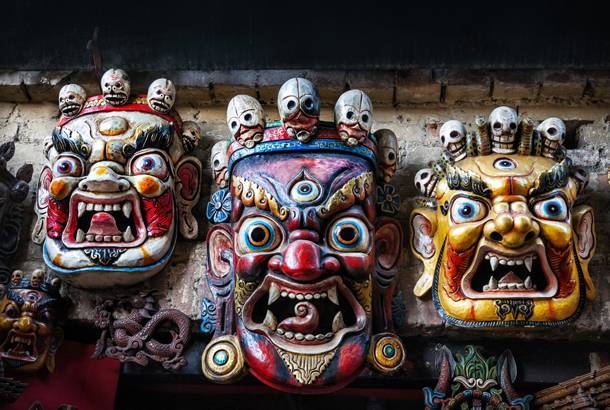
What is good to shop for in Nepal?
Nepal is jam-packed full of beautiful treasures that can be bought for ludicrously cheap prices and brought home as souvenirs. Thangkas, religious paintings of Buddha on pieces of fabric, make stunning centrepieces back home and can be found in abundance. Another traditional Nepalese purchase is a singing bowl. This unique item is a bowl that makes a soothing humming noise when the rim is rubbed with a wooden stick and is a great accompaniment to a meditation session. Those looking for wall decorations will find plenty of choice with traditional Bhairab masks, dramatic faces used in dance performances with vivid colours.
For the budding writer, notebooks and diaries made with rice paper are an authentic souvenir of Nepal’s rice-orientated culture. These can usually be found hidden among other brightly coloured and fabulously designed handicrafts. Purses, pillow covers and throws with intricate patterns and stitching are staples in Nepalese markets and are easy to transport home. Traditional jewellery, made with gold and silver, is also a favourite with travellers.
Whilst trekking there are traders dotted along the trails selling everything from down jackets, waterproofs, jumpers, hats and socks at very reasonable prices, so there is no need to panic if you haven't packed enough. It is advisable to pack light and simply buy extra clothing en route if needed.
Is bargaining acceptable in Nepal?
Bargaining is a way of life in Nepal and happens on a daily basis between locals. Travellers are usually regarded as ultra-rich (and they are in comparison with the average Nepali) and are therefore usually offered an inflated price when they ask how much an item costs. The vendors are simply trying their luck and will often take down the price considerably if you engage in a bit of light-hearted haggling. Some guesthouses will also occasionally drop their price if you stay for several nights or arrive in a large group.Is it safe for a single woman to travel in Nepal?
In general, Nepali men are very respectful towards women and given the religious and chaste nature of the country, unwanted physical contact with women is rare. Foreign women should be prepared to be met with stares and curiosity but this will very rarely become anything more and certainly not anything threatening. If the unwanted attention is annoying to you then dress conservatively or wear Nepali clothing to blend in more. As a rule, the Nepalese are a very friendly people who are much more likely to help than harm you.
What is the duty free allowance for Nepal?
Travellers are permitted to bring the following into the country:
- 200 cigarettes and 50 cigars and 20g of tobacco
- 1.15L of spirits or wine or 12 cans of beer
- Medicine not exceeding Rs10,000 in value
- Canned food not exceeding Rs5,000 in value
- Fresh fruit not exceeding Rs2,000 in value
- 50g of gold ornaments and 100g of silver ornaments
All baggage must be declared on arrival and departure. Certain goods including cameras, videos and electronic goods may only be imported duty-free if they are exported on departure. They may not be left in Nepal.
The following are banned from being imported into the country: narcotics, beef and plastic bags less than 20 microns thick. Restricted items include firearms and ammunition, radio equipment and poppy seeds.
What is the currency in Nepal?
The currency of Nepal is the Nepalese Rupee. Check OANDA for the latest exchange rates.
Pound Sterling, US Dollars or other major currencies can be exchanged at the airport and there are plenty of places to exchange money in Kathmandu.There are also ATMs at the banks in Kathmandu and Pokhara, although as these are sometimes out of order and banks are not always open, we advise that you bring some cash with you, preferably US dollars. It's advisable to request bank notes in smaller denominations, as it can sometimes be hard to get change from large notes and smaller notes are handy for smaller purchases and gratuities.
Traveller's Cheques are not recommended as they're often difficult to exchange and incur high fees.
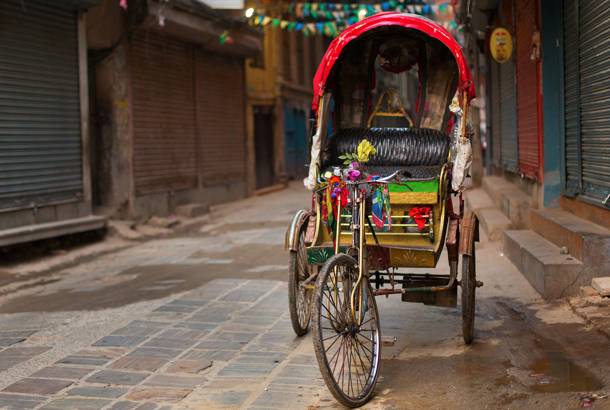
What do things cost in Nepal?
Travelling through Nepal is incredibly cheap - possibly one of the cheapest trips you will ever have. Accommodation can cost as little as USD $5 per night for budget accommodation and can stretch up to USD $20-30 for mid-range hotels. Food can be found for around a dollar or two per meal, although high-end restaurants can costs more like USD $10. Alcohol can be a little expensive but still won’t set you back more than a few dollars. Tuktuks are all but extinct in Nepal but taxis can be found in the larger cities and will take you anywhere in the city for USD $3-5. Public buses cost a maximum of USD $5 for the longest possible journey.
What sort of plugs do I need for Nepal and what is the voltage?
Standard voltage is 220 volts. Primary sockets generally require Indian round 3 pin plugs that are similar but not identical to European plugs, however you will also find those which require the European variety. We recommend that you pack a universal travel adaptor. You will need a voltage converter and plug adaptor in order to use U.S. appliances.
Is WiFi widely available in Nepal?
The internet situation in Nepal improves every year and it is easy to get online in Kathmandu. There are also plans in place to provide fast wireless internet at many of the country's popular trekking destinations. However, despite this progress, WiFi is still not as prevalent as it is elsewhere in the world. In addition to this, outages and bad reception in more rural areas mean that any WiFi connection you do manage to find may be slow and unreliable.
What time zone is Nepal on?
Nepal is 5 hours 45 mins ahead of Greenwich Meantime and does not observe Daylight Saving time. No, that is not a typo! Nepal is one of just a handful of countries with a time zone that doesn't align at the top of the hour with Coordinated Universal Time (UTC).
See Also
For more handy information on Nepal, check out the following resources:
Best Time to Visit - climate and seasons in Nepal
Best Places to Visit - see our recommended destinations in Nepal
Tourist Visas - the lowdown on visa regulations for Nepal
Traveller Reviews - see what our passengers say about our Nepal tours
Travel Alerts - latest updates and advice for Nepal
Trekking Guide - accomodation, meals, insurance and more
Everest Base Camp - key information about this famous trek
Annapurna Trekking - highlights and fitness levels












